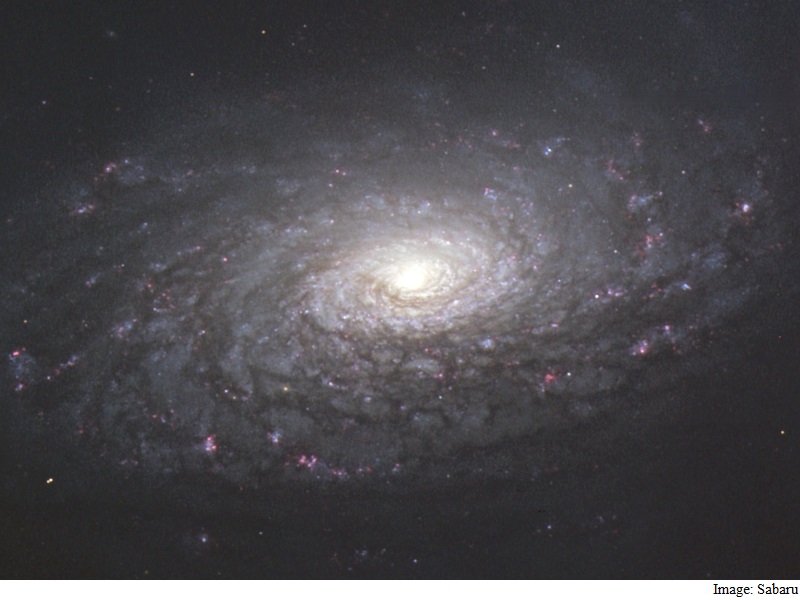- Home
- Science
- Science News
- Galaxy 'Fossils' Reveal the Formation, Evolution of Massive Galaxies
Galaxy 'Fossils' Reveal the Formation, Evolution of Massive Galaxies

Furthermore, they identified progenitors of these dead galaxies when they were forming stars at an earlier cosmic epoch.
This study establishes a consistent picture of the history of massive galaxies over 11 billion years of cosmic time.
"We would like to explore galaxy evolution in more detail by carrying out an object-by-object study and by extending the method to an even earlier epoch," said Dr. Masato Onodera from Swiss Federal Institute of Technology in Zurich, Switzerland.
In the local universe, massive galaxies hosting more than about 100 billion stars are predominantly dead elliptical galaxies, without any signs of star-formation activity.
The team used Subaru Telescope at the summit of Mauna Kea, Hawaii, to observe multiple objects simultaneously, efficiently observing a sample of 24 faint galaxies.
They created a composite spectrum that would have taken 200 hours of Subaru Telescope's time for a single spectrum of comparable quality.
They discovered that the stellar content of these galaxies is strikingly similar to that of massive elliptical galaxies seen locally.
The analysis shows that the age of the galaxies is already one billion years old when observed four billion years after the Big Bang.
They host 1.7 times more heavy elements relative to the amount of hydrogen.
The results reveal that these massive dead galaxies have evolved without further star formation.
The research was published in The Astrophysical Journal.
For the latest tech news and reviews, follow Gadgets 360 on X, Facebook, WhatsApp, Threads and Google News. For the latest videos on gadgets and tech, subscribe to our YouTube channel. If you want to know everything about top influencers, follow our in-house Who'sThat360 on Instagram and YouTube.
Related Stories
- Samsung Galaxy Unpacked 2025
- ChatGPT
- Redmi Note 14 Pro+
- iPhone 16
- Apple Vision Pro
- Oneplus 12
- OnePlus Nord CE 3 Lite 5G
- iPhone 13
- Xiaomi 14 Pro
- Oppo Find N3
- Tecno Spark Go (2023)
- Realme V30
- Best Phones Under 25000
- Samsung Galaxy S24 Series
- Cryptocurrency
- iQoo 12
- Samsung Galaxy S24 Ultra
- Giottus
- Samsung Galaxy Z Flip 5
- Apple 'Scary Fast'
- Housefull 5
- GoPro Hero 12 Black Review
- Invincible Season 2
- JioGlass
- HD Ready TV
- Laptop Under 50000
- Smartwatch Under 10000
- Latest Mobile Phones
- Compare Phones
- Moto G15 Power
- Moto G15
- Realme 14x 5G
- Poco M7 Pro 5G
- Poco C75 5G
- Vivo Y300 (China)
- HMD Arc
- Lava Blaze Duo 5G
- Asus Zenbook S 14
- MacBook Pro 16-inch (M4 Max, 2024)
- Honor Pad V9
- Tecno Megapad 11
- Redmi Watch 5
- Huawei Watch Ultimate Design
- Sony 65 Inches Ultra HD (4K) LED Smart TV (KD-65X74L)
- TCL 55 Inches Ultra HD (4K) LED Smart TV (55C61B)
- Sony PlayStation 5 Pro
- Sony PlayStation 5 Slim Digital Edition
- Blue Star 1.5 Ton 3 Star Inverter Split AC (IC318DNUHC)
- Blue Star 1.5 Ton 3 Star Inverter Split AC (IA318VKU)

















